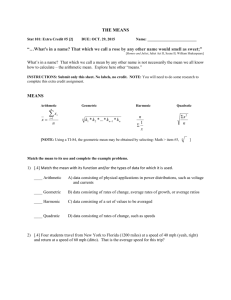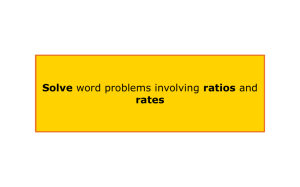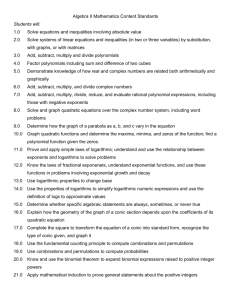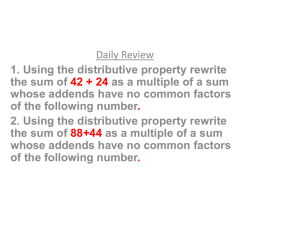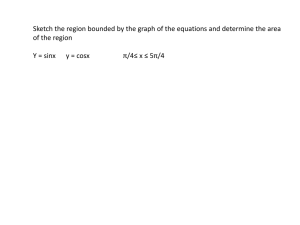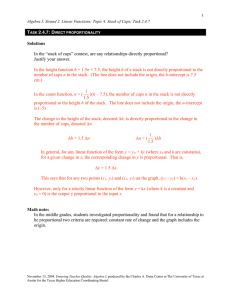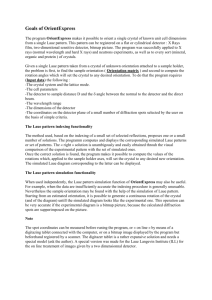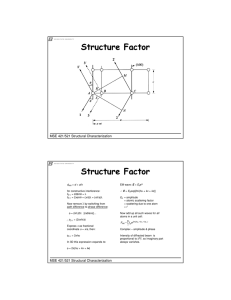John Content Test_problems 16-19 for 7-8 teachers
advertisement
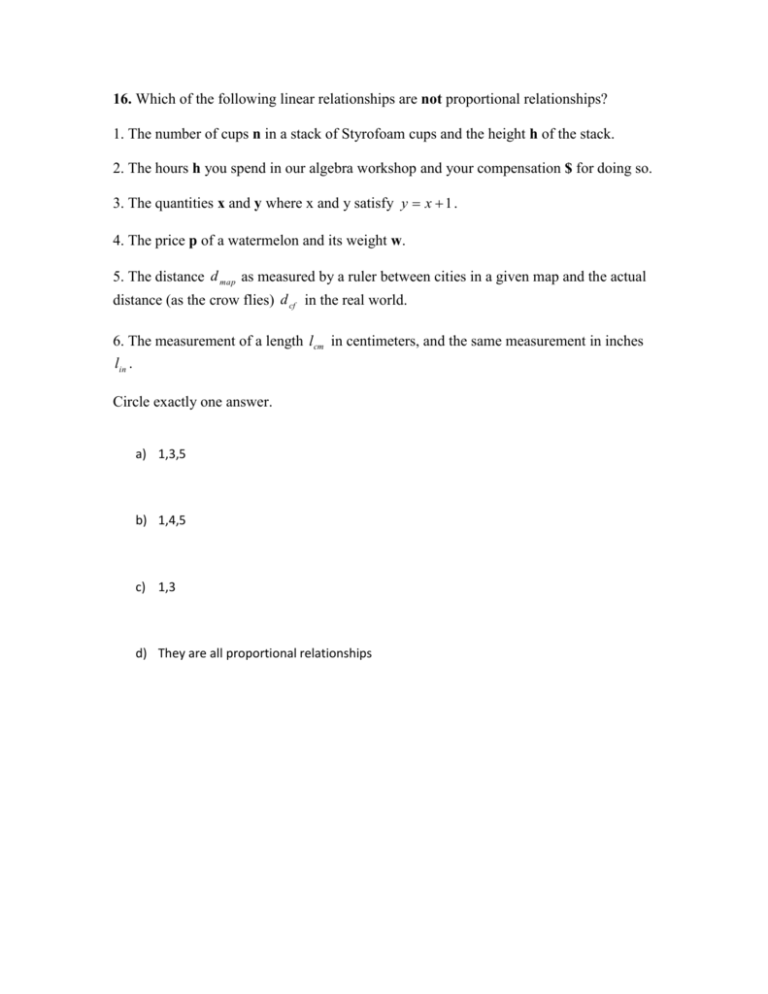
16. Which of the following linear relationships are not proportional relationships? 1. The number of cups n in a stack of Styrofoam cups and the height h of the stack. 2. The hours h you spend in our algebra workshop and your compensation $ for doing so. 3. The quantities x and y where x and y satisfy y x 1 . 4. The price p of a watermelon and its weight w. 5. The distance d map as measured by a ruler between cities in a given map and the actual distance (as the crow flies) d cf in the real world. 6. The measurement of a length lcm in centimeters, and the same measurement in inches lin . Circle exactly one answer. a) 1,3,5 b) 1,4,5 c) 1,3 d) They are all proportional relationships 17. TV screen ratios -- Old movies and older TV sets have a 4:3 screen ratio or 1.33 to 1. In the 1960's, cinemascope was a widely adopted wide screen format of 2.35 to 1; that is, the screen was 2.35 times wider than it was high. In determining a modern TV screen ratio, an attempt was made to 'split the difference' between the two ratios so that 4:3 images from old movies and TV programs as well as 2.35:1 images from more recent films were roughly 'equally compromised' in the new format. The technique used was to calculate the geometric mean of 1.33 and 2.35. The geometric mean is of 1.33 and 2.35 is given by a) 1.33 2.35 2 b) 1.33 2.35 2 c) 1.33 2.35 d) I'm not sure but I think it is the screen in the middle. 18. A rectangular lot is bounded on one side by a river and on the other three sides by a total of 240 yards of fencing. Notice that since one side of the rectangle is bounded by the river, we only need fence on three sides, so if x represents the side perpendicular to the river and y the side parallel to the river, then the equation that represents the area A of the pen is given by . a) A y (240 2 x) b) A 2 x (240 y ) c) A x (240 y ) d) A x (240 2 x) 19. Mrs. Laue was deriving the quadratic equation for her class just after she had introduced the technique of completing the square. She began with the standard form of a quadratic equation y ax 2 bx c and she factored out the a to obtain b c y a ( x 2 x ) . She then said all we need to do is to find the roots of the equation a a b c since the answers will be the same as the ones for our original equation y x2 x a a in standard form. Mrs. Laue was correct because a) If y 0 then y 0 a b) Since a 0 the sec ond equation is 0 only if the first is. c) If you multiply the second equation by a you do not change the value of the roots of the second equation. d) All of the above reasons are correct


